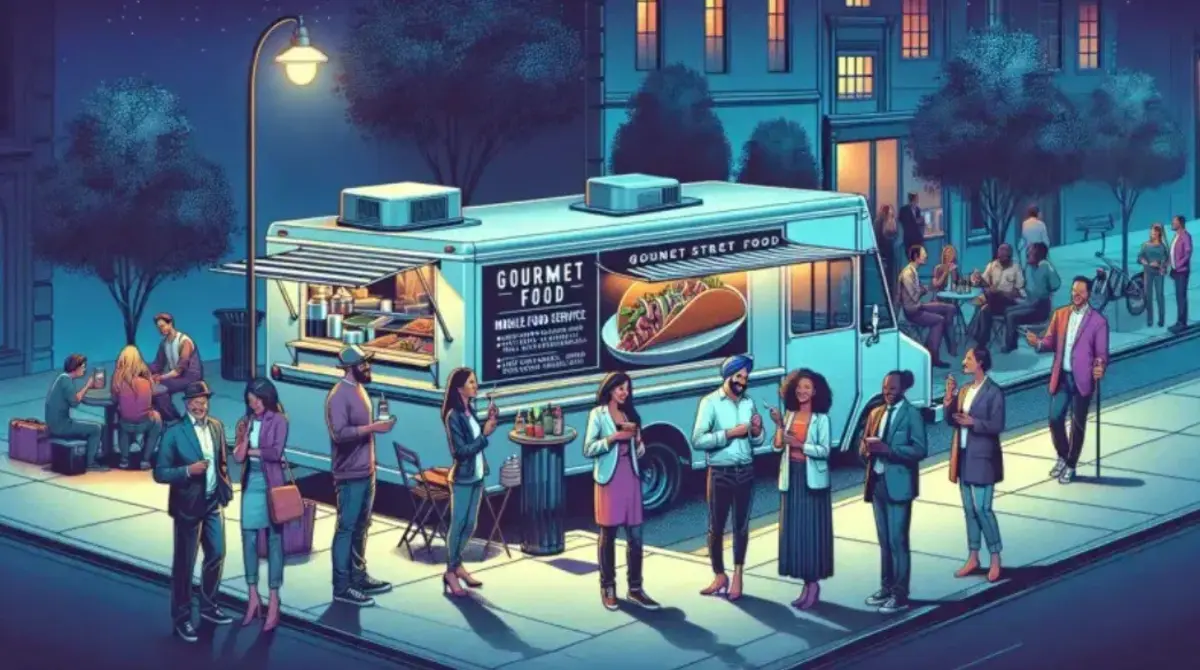Explore powerful food truck case studies showing how Rolling Bites, TacoTrail, GrillGo, and GreenBite used data analytics, subscriptions, B2B catering, and zero-waste strategies to achieve up to 74% revenue growth. Learn how smart innovation, loyalty tactics, and community partnerships can transform any food truck business.
Case Study 1: How Rolling Bites Food Truck Increased Revenue by 68% Through Data-Driven Location Strategy
About the Business
Rolling Bites, a gourmet food truck in Austin, Texas, has been serving fusion tacos and bowls since 2019. With a capacity for 120 - 150 meals daily, the truck quickly attracted attention but struggled with inconsistent weekday sales. Heavy reliance on weekend events made revenue unpredictable. This food truck case study sample shows how a data-driven strategy helped the founders stabilize operations, grow visibility, and increase revenue by 68%.
Name: Rolling Bites
Location: Austin, Texas, USA
Type: Gourmet street food truck (fusion tacos & bowls)
Founded: 2019
Capacity: Serves ~120 - 150 meals/day
By 2021, Rolling Bites faced common hurdles seen in many case study examples of food truck businesses: fluctuating daily revenue, dependence on festivals, and difficulty identifying profitable locations. Limited brand recognition compared to restaurants also made customer retention difficult, creating uncertainty for the long-term success of the food truck business.
The team introduced a data-driven approach to operations and marketing:
Location Analytics - Used mobile data and Google mobility trends to identify high-traffic zones, rotating between downtown lunch hours and suburban evenings.
Digital Ordering & Pre-Sales - Launched an online ordering platform with scheduled pickups, reducing wait times and capturing busy office workers.
Loyalty & Retention - Introduced a QR code punch card (buy nine meals, get the tenth free), promoted via Instagram and SMS.
Event Partnerships - Partnered with breweries and gyms for recurring pop-up nights and added catering packages for small corporate events.
The Results (After 6 Months)
Metric | Before | After | Change |
Average Daily Revenue | $850 | $1,430 | +68% |
Repeat Customer Share | 22% | 46% | +24 p.p. |
Online Pre-Orders per Day | 0 | 37 | New Channel |
Event Partnerships | Occasional (2–3) | 14 recurring | Major Lift |
In just six months, Rolling Bites transformed its business through a strategic, data-driven overhaul. Average daily revenue soared from $850 to $1,430, reflecting a remarkable 68% increase. The impact of their new loyalty and retention strategies was equally significant, with repeat customer share doubling from 22% to 46%. The introduction of digital ordering brought a new revenue stream, as the truck began averaging 37 online pre-orders per day—a major leap from zero. Perhaps most impressively, event partnerships grew from just 2–3 occasional gigs to 14 recurring collaborations, establishing a stable and scalable channel that reduced reliance on unpredictable foot traffic. This data proves how actionable insights and operational improvements can drive both financial performance and customer loyalty in the food truck business.

Data can remove guesswork in location strategy. By using analytics, food trucks can pinpoint where demand will be highest, leading to more consistent daily revenue.
Pre-order systems improve efficiency. Allowing customers to schedule pickups reduces wait times and increases meal throughput, making it easier to serve more customers in less time.
Loyalty programs build repeat business. Even simple digital punch cards encourage return visits and help transform occasional buyers into loyal customers.
Local partnerships expand visibility. Collaborating with breweries, gyms, or small events provides exposure to new audiences without the high costs of advertising.
Rolling Bites demonstrates that starting a food truck business with smart use of data and creative food truck ideas can turn uncertainty into steady growth.
